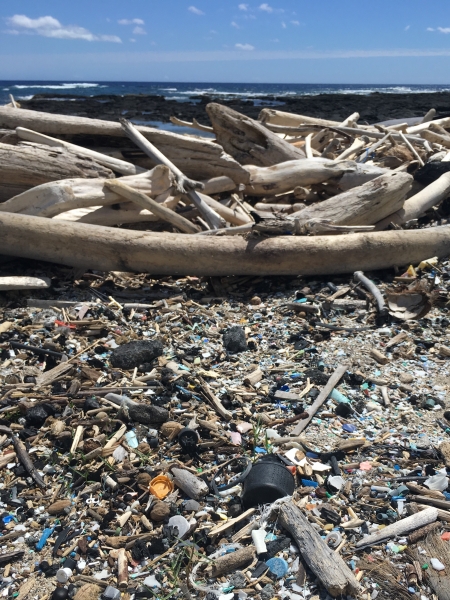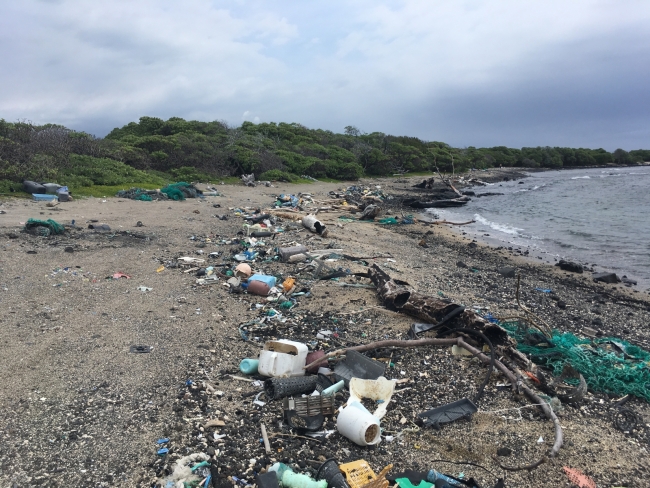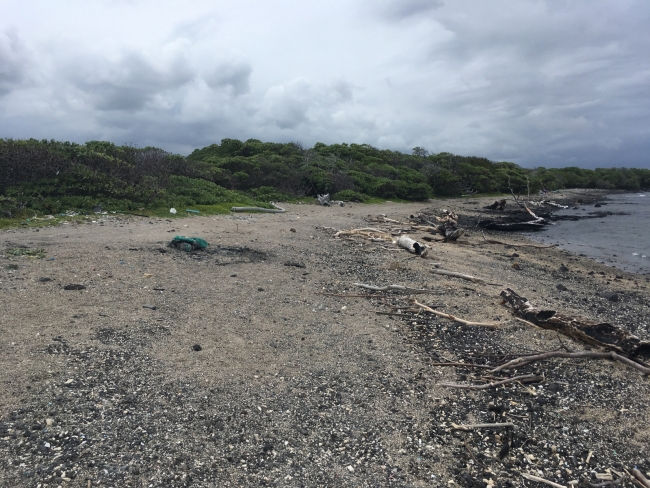By: Mattie Mae Larson and Megan Lamson, Hawai‘i Wildlife Fund
Thanks to the continued support from the NOAA Marine Debris Program and the Kona Brewers Festival grant awards and private donations, Hawai‘i Wildlife Fund (HWF) has hit the ground running in 2019!
The southern shoreline of Hawai‘i is inundated with plastic pollution - to the point that one area, routinely cleaned by volunteers, is sadly known as “Plastic Beach.” HWF is committed to caretaking this culturally rich stretch of coastline and restoring its proper name: Kamilo Point.
Starting from 2003 to the end of 2018, HWF achieved the incredible milestone of removing 250 tons (500,000 lbs) of marine debris from Hawai‘i Island. In 2019, HWF has hosted 29 cleanup events (3 on Maui) and removed another 36,659 lbs of marine debris from island shores with the help of 500+ volunteers.
Utilizing a new one-ton (U.S.) marine debris hauling truck, purchased with the help of a private foundation, HWF is able to further enhance Hawai‘i Island efforts. More net recovery patrols can be made due to a specialized dump-bed, loading ramp, and overhead winch system, which allows a small crew (2-5) the capacity to load up to 2,000 lbs of nets per trip.

These net patrols, along with community-based coastal cleanups on the islands of Kaua‘i, Maui, Lāna‘i, and Hawai‘i, are the foundation of a multi-island effort to remove the high number of derelict fishing gear and medium-to large-scale marine debris. In partnership with Surfrider Foundation’s Kaua‘i Chapter and Pūlama Lāna‘i, HWF is working to address this continued issue collaboratively with the support of a FY18 NOAA Marine Debris Removal Grant. In just the first 6 months of this project, these four groups have collectively removed 103,153 lbs from our coastlines!
Additionally, HWF environmental education mentors have been privileged to work closely, in and outside of the classroom, with students in 14 schools to date. We have already been into 30 classrooms in 2019 and conduct an average of two school group field trips per month. Our classroom environmental education program grants students insight about what they will see at the beach before they arrive. HWF loves the opportunity to mentor our island’s youth, working together towards innovative solutions to help solve the local (and global) marine debris problem.
Along with regular cleanups, net patrol work, and environmental education, HWF conducts marine debris surveys approximately 10 times per year. During our debris survey in March, we collected/counted:
- 2,507 pieces of debris over 2.5 cm along the 100 m survey;
- 95.7% were plastics
- 3% were glass
- 1.3% were other materials
We hope that this data, and data from groups across the globe, can be used to help “turn off the spigot and tackle plastic pollution at the source.”
NONE of this would be possible without all of our amazing volunteers, community, and non-governmental organization partners. This year, 542 volunteers contributed 2,385 hours to help make our work possible. As a small but mighty nonprofit we are always looking for volunteers. Please reach out to us to join or if you don’t live nearby, start a DIY cleanup event in your own neighborhood!



